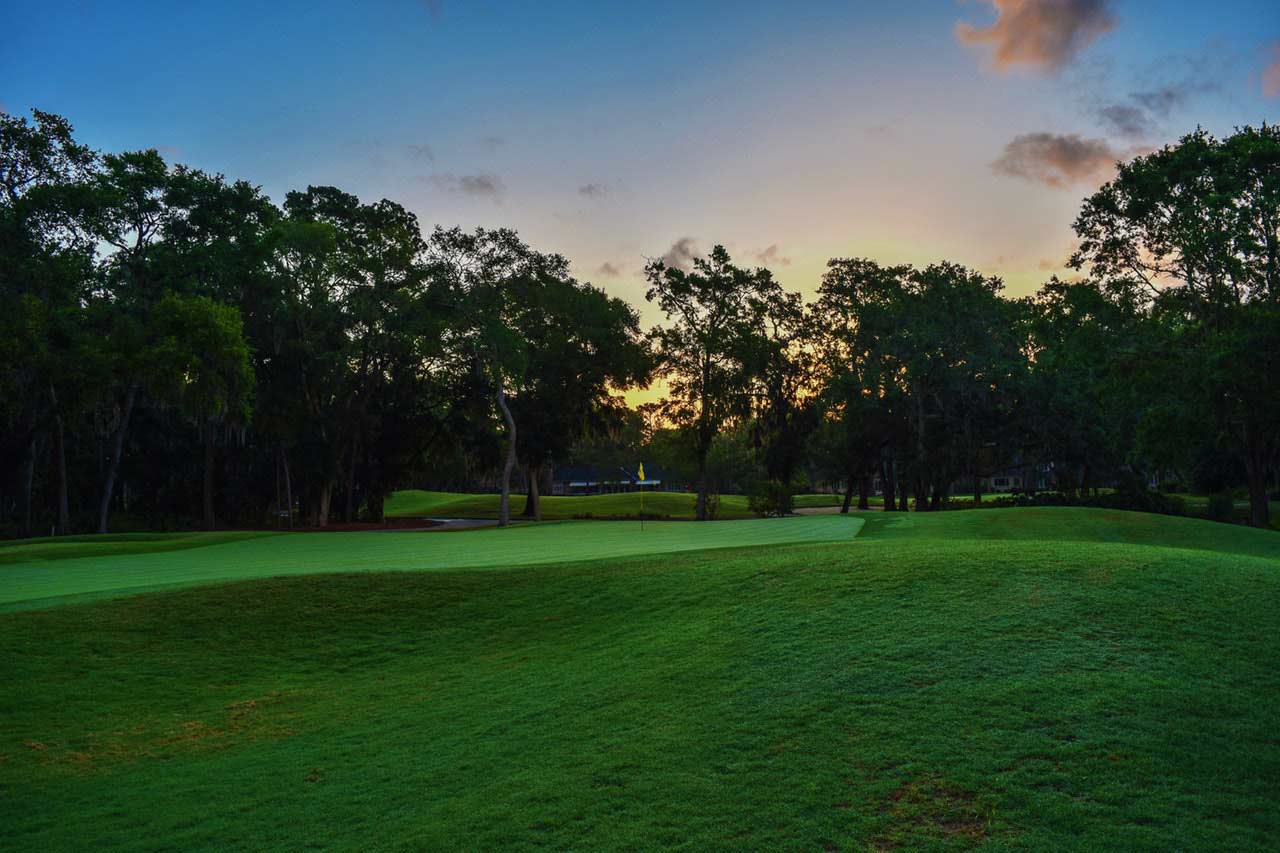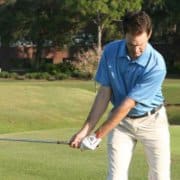Golf Course Owners Forum – How to Market and Sell Golf
In today’s Golf Course Owner and Operator’s Forum, we’re discussing how to market your golf facility.
I’m leading a discussion on strategies that golf courses typically fail to consider. Golf is what we call a “Considered” buying process. The time it takes to usher someone along the customer lifecycle from stranger to loyal customer is often considerable – 2 to 6 months or more.
Listen to the podcast now:
Presentation notes:
Country Clubs: Net New Business Generation
- Market Research (snapshot of ecosystem) (state and localized census data, facility reporting (many systems, private provider does this for us – play/participation rates, facility competitive analysis, etc.)
- Usually 3 radii (10, 20, 30-minute drive times)
- Population counts (past, current and 5 yr projections)
- by age (0-34, 35-54, 55+) play rates (.8 rounds, 2.8, 2.8, 1.9 avg.)
- ethnicity (white 2.2, Hispanic .7, Black .7, Asian 1.6, other .4, all 1.9 avg.)
- HH income (0-35k 1.3, 35-75k 6.7, 75k+ 7.1)
- index showing comparative age, ethnicity, income-based participation
- Household makeup (male, female, Incomes, race/ethnicity) past, current, 5 yr. projection. How skews vs. norm? Associated participation rates –
- Competitive set – total supply (number of holes), clubs by proximity, type (private, public premium/price/value, learning & practice), offerings, pricing. Rounds played by facility type (Kentucky: 9 clubs, 8 private, 1 value…nothing public premium or price level)
- Aggregate (based on state level averages) – all factors, calculate total number of golfers, play frequency, estimated total rounds up for grabs.
- Trends – population growth/loss estimates, new development, golf course supply changes, local climate (job growth, real estate trends, macro forces (economy, political)
Kentucky example: Local population very low, with lot of private club competition in the area (8 of 9), but population projected to grow 20% in 5 years. Verified with visible construction projects, development, etc. Age, race, income skewed very high vs. averages…mostly 25-50 yr olds, white, highest income brackets. Opportunity to win incoming new golfers. Competition (9 nearest clubs, no public premium or public price whatsoever. Hybrid solutions at one of their clubs to win as the only clubs offering this opportunity.
Download our book Market Positioning for Country Clubs
- Buyer Personas
- Who? Where are they? Bait? Where to take them?
- 1 – 3 max representations of your ideal customers (with photos)
- Personas allow to create content that resonates – personalized, addresses concerns, relevant.
- Family Fred – 42 years old, wife and 2 kids, boy & girl 8 &10, family income of $150k, both parents work but with some flexibility, weekends holidays and evenings are important for family time & very limited free time.
- Junior Johnny – 28 years old, still single, moved to the area for his job 2 years ago and wants to be more active socially, enjoys outdoor sports and fitness with some competition, starting in his career and not sure what the future holds professionally, earns $65k without any big expenses or obligations, more free time on weekends holidays and evenings but wants friends around to have fun with.
- Retiring Rita – 62 years old, finishing up her work career and phasing down obligations, children have moved out on their own, husband plays a little golf and she’s interested in taking up a hobby that will provide exercise, social and outdoor activity into her retirement years. She’s not very competitive at all…just wants to be more social with her friends and have fun. She’s lived in the area for 15 years with a number of friends who have dabbled in golf. She and had tried golf years before, but is apprehensive about starting back up.
Here’s link to develop your own Buyer Personas
- Calculate Customer Average Annualized and Lifetime Values
- Each new member – Annual = gross revenue/# of members ($2M/400 = $5,000 ea.)
- Attrition rate – divide – 10% attrition rate > 1/.10 = 10 years (lose 40 people/year)
- Average lifetime value – Annual x Avg. Duration ($5k x 10 = $50,000)
Winning New Business
- Customer Life Cycle
- Awareness (top of the funnel) – Basic level…Never or rarely ever tried golf. Not even considering golf as an option in general – never played, too expensive, elite, scary, intimidating, into other things for recreation/exercise. Comparing to other options like hiking, biking, soccer, other sports, family time, gym membership, etc. (why is golf great? Address rejections (expensive, time consuming, elite, snobby, embarrassing, scary, full of rules)
- Evaluation (conversion, middle of the funnel) – They’re doing heavy research whether or not your offering is a good fit for them. They’ve somehow “raised their hand” and identified themselves. Has expressed an interest in golf, we know who they are, but need time to consider level of involvement or which club to join or call their own.
- Purchase (bottom of the funnel) – They’re figuring out exactly what it would take to become a customer (facility tour, meeting, membership inquiries, downloads, etc.)
- Activation (onboarding) – Most excited about new endeavor, validating their purchase, precarious socially (getting plugged in). First 2-3 months vital for longevity
- Referral (evangelist for the club) – Best possible time is soonest after purchase. New member events, referral promotions (with urgency), personal invites, 85/50 program
- Golf is a considered buying process –
- Function of cost – greater cost = longer consideration
- Cost is high than just dollars: opportunity cost – Golf is hard, scary, social, expensive, time consuming…could be doing many other things
- Typically 2 – 6 months in evaluation stage for average private club (more for beginners and expensive clubs) – sales processes aren’t set up for this!
- Numbers: Stranger – Lead – Customer.
- Close rate 5% = 20 leads for each new customer
- 2% conversion rate = 50 Strangers for each new lead
- Total = 1,000 stranger for each new customer
- CPM – cost to reach 1,000 qualified strangers
- Customer acquisition cost – ads, nurturing, staff
- Example: more qualified/targeted advertising is higher CPM, but improve conversion rate from 2% to 4%, and close rate from 5% to 7% = 350 strangers per customer
- Member referrals highly qualified, highest close rates, minimal CAC – 100% conv, 33% close = 3 referrals for each new customer
- Weakest areas in sales funnel we see (funnel is broken)
- Chasing quick wins – membership sales ads (buy membership now, extracting value, car salesmen, demonstrate quick ROI)…not recognizing that people are going to do their homework, research, evaluate options on their own time…quick sales pitches can trash long-term close rates.
- Clubs focus on awareness, but there’s no formalized process for building a community of prospects and nurturing through the evaluation stage. Asking to buy $20k membership, nothing less (or $100/hr lessons), and no process to fill the top of the funnel, then stay top of mind over time, deliver value, earn trust, build authority, and improve close rates over the 2-6 months of consideration.
- Activation & Referrals – current members (mostly new members) are by far source for lowest new customer acquisition cost – excited, provide social proof, want to play with friends, do the selling for you. Never happens if they don’t get properly plugged in, and if they’re never encouraged or given special opportunity to invite their friends.
- Solutions (build it backwards)
- Membership Programs – know your market, niche, differentiators, your audience/customer base, pricing…tiered programming (usually)
- Sales – how do we spend our time & resources on hottest prospects most likely to close. Sales should be easy, almost formality…what are prospects expectations, how informed are they, are they ready, willing, able to purchase? If not, better nurturing.
- Tap into existing members/customers – best referral source, highest close rates, evangelists, want to play with friends…
- Automated Nurturing – recurring accessible programming that will resonate with your audience (personas), automated email sequences nurturing (helpful), segment your audience, offers (5-1 help ratio minimum), …escalate at their own pace!! Move up the “ladder” toward highest value options – Free clinics, social events, free day use of the pool, dining, paid lessons, playing golf, social membership, tournaments, golf membership. Recurring touches…email lessons, discount coupons, occasional access, etc.
- Conversions (middle of funnel, building segmented database) minimal barriers to entry (free, helpful, informative, entertaining, give without expectation) Goal is not to sell, but to create qualified leads that you can then nurture along, earn trust, build authority, excitement, FOMO, etc.
- Awareness (fill top of funnel). Where is the attention? What are the most underpriced ways of getting attention of ideal customers? Favorites: FB/Instagram ads – not for membership. Highly targeted…say people within 20 miles of the club, earning more than $80k, expressed an interest in hiking – “Hey Smithtown hikers, have you tried the 3 mile hike at Smithtown Country Club with a 20 pound bag of clubs on your shoulder? Sign up for our free clinic to learn how to hit a white ball while you’re at it.”
Consistent Free golf lessons – easy to fill top of sales funnel (awareness/consideration stage), integrated nurturing (consideration/decision stage) – both real and digital, sticky leads, higher close rates)…long-term game though
- How Golf Courses are Leveraging Cheaper Remote Consulting for Success - October 5, 2023
- Top 3 Reasons Why Private Golf Courses are Struggling in 2023 - September 5, 2023
- How to make the most of your prospect lists - May 7, 2019








